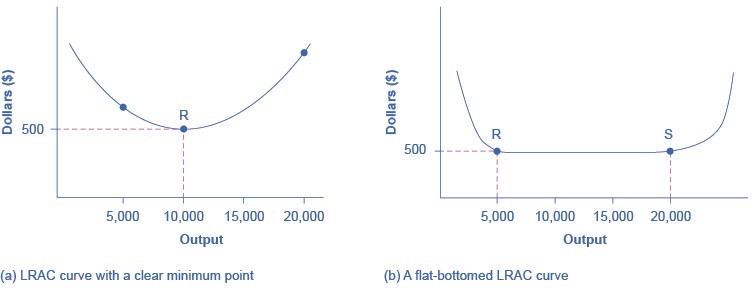How does the Long-Run Average Cost Curve Affect Industry Competitors?
The shape of the long-run average cost curve affects the size and number of firms that will compete in an industry.

Where the LRAC curve has a flat-bottomed area of constant returns to scale.
If the LRAC curve has a single point at the bottom, then the firms in the market will be about the same size, but if the LRAC curve has a flat-bottomed segment of constant returns to scale, then firms in the market may be a variety of different sizes.
The relationship between the quantity at the minimum of the long-run average cost curve and the quantity demanded in the market at that price will predict how much competition is likely to exist in the market.
If the quantity demanded in the market far exceeds the quantity at the minimum of the LRAC, then many firms will compete. If the quantity demanded in the market is only slightly higher than the quantity at the minimum of the LRAC, a few firms will compete. If the quantity demanded in the market is less than the quantity at the minimum of the LRAC, a single- producer monopoly is a likely outcome.
